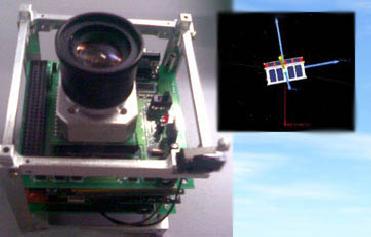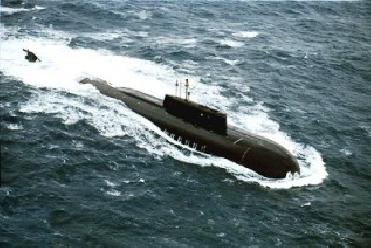
The STUDSAT satellite.
BANGALORE (PTI): A satellite developed entirely by students is all set to be put into orbit along with Cartosat 2B of ISRO and would be carried by a Polar Satellite Launch Vehicle (PSLV) next month.
"The satellite 'sTUDSAT', designed and developed by a consortium of seven engineering colleges from Bangalore and Hyderabad, weighs less than one kg with a volume of 1.1 litres and has been designed to operate in a Low Earth Orbit (LEO) at an altitude of 680 km," Studsat project coordinator Jharna Majumdar told reporters here on Thursday.
"The payload of the satellite, built by 40 students, consists of a CMOS camera capable of capturing images with a ground resolution of approximately 90 metres," the project team leader Chetan Angadi said.
"The satellite will send the image and telemetry data from the orbit to the ground station. This data could be used for weather study, vegetation and landscaping study," he said.
"The design, development and fabrication of the satellite is complete...It is now been undergoing final environment test for takeoff," he said.
"The satellite would be officially handed to Indian Space Research Organisation on April 17 and later be taken to Sriharikota for the launch scheduled somewhere in May," Majumdar said.
Developed at an approximate cost of Rs 55 lakh sans the infrastructure cost and equipment provided by the consortium and ISRO, the satellite has been completely developed by students with no parts imported. Lack of imported parts has drastically cut down the cost, she said.
Built over a period of one-and-half year, the idea germinated at an international conference and later the students, keen in building the satellite, presented three papers on the subject which even won them awards, before building it.
"The satellite has been built as per the parameters set by ISRO. The ISRO officials have been reviewing the project and checking that it met all parameters at every stage. The satellite has met all the stringent requirements of ISRO," said Chetan, who is part of 12 core members leading the project.
"Earlier to the building of the flight module, the students built two prototypes which went through the entire test before embarking on building of the final flight module," Majumdar said.
"The flight module has been put through a temperature test, a vibration test and a shock test and its performance evaluated after each test. The satellite has been qualified by the space agency after passing of various tests," she said.
"The satellite would be tracked by the Satellite Integration and Ground Station (NASTRAC), developed by Nitte Meenakshi Institute of Technology (NMIT), which is part of the consortium," NMIT principal H C Nagraj said.
The ground station, also built by students, is capable of communicating with more than 250 amateur satellites.
The students would be at Sriharikota when the launch takes place and some would even man the ground station at NMIT.
"We are very excited," said Chetan Dixit, in charge of the overall project management.
 Previous Article
Previous Article Next Article
Next Article












The Indian Air Force, in its flight trials evaluation report submitted before the Defence Ministry l..
view articleAn insight into the Medium Multi-Role Combat Aircraft competition...
view articleSky enthusiasts can now spot the International Space Station (ISS) commanded by Indian-American astr..
view article